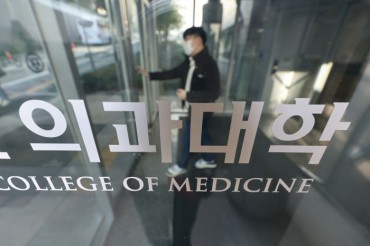
Of note, those in the lowest 25 percent by assets showed a strong interest coverage ratio of 343 percent in 2002, but it nosedived to 27 percent in 2013 from 113 percent in 2011. Last year, thanks to lower interest rates, it improved slightly to 42 percent. (image: Kobiz Media / Korea Bizwire)
SEOUL, July 27 (Korea Bizwire) – An increasing number of small and mid-sized companies are unable to cover their debt servicing costs with their operating profits.
According to a report on the soundness of the debts of Korean companies from the Korea Institute of Finance released on July 26, although the leverage ratio of Korean companies has improved overall, except for the period of global financial crisis in 2008, their interest coverage ratio is falling.
Lee Bo-mi, the author of the report and a research fellow at KIF, analyzed leverage ratios and interest coverage ratios based on financial statements from listed and non-listed companies to determine their financial soundness.
According to her analysis, the overall leverage ratio fell to 109 percent in 2005 from 1997’s 363 percent. In 2008, it went up again to 136 percent but had fallen to 115 percent by 2014.
However, in comparison, for companies ranked in the lowest 25 percent by assets, the leverage ratio soared to 491 percent in 2013 after beginning its increase in the mid-2000s.
As for the interest coverage ratio, it went down to 61 percent in 1998 but improved to 524 percent in 2014. However, the portion of “marginal companies” which have less than 100 percent interest coverage ratio rose to 37 percent last year from 26 percent in the early 2000s.
Of note, those in the lowest 25 percent by assets showed a strong interest coverage ratio of 343 percent in 2002, but it nosedived to 27 percent in 2013 from 113 percent in 2011. Last year, thanks to lower interest rates, it improved slightly to 42 percent.
Lee said, “The leverage ratio and interest coverage ratio of SMEs are falling sharply. Around 70 percent of them are dependent on short-term borrowing, and they need to pay out 57 percent of their loans in one year. When the prime rate goes up, they will face liquidity risks, so their debt statuses should be closely monitored and restructured to reduce risks.”
By John Choi (johnchoi@koreabizwire.com)






